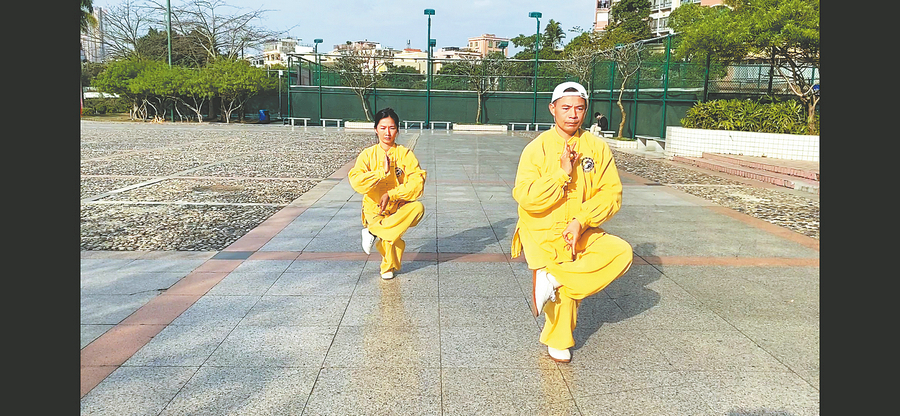

It's not just Li's prentices. More young people, like Lin Xiaoxue, are breaking the stereotype that taijiquan is "only for the elderly".
A short video she made shows her practicing taijiquan in the morning in traditional garb, before getting dressed up in stylish modern clothes. She posts such videos on Xiaohongshu, and has attracted over 138,000 fans.
The 32-year-old started to practice taijiquan in 2015, to improve her weak constitution. Lin often fell ill as a child and failed to treat her ailments with traditional Chinese and Western medicine. So she decided to take less strenuous exercises and tried to learn taijiquan on her own by watching instructional videos online.
She lived in Vietnam for half a year in 2016, and when she did taijiquan at a temple there, she realized taijiquan's global popularity — she saw a Vietnamese instructor teaching a group of expats the Chinese martial art.
When she came back to China to work in Shenzhen, Guangdong province, as a visual designer, she encountered a group of people practicing taijiquan in a local square.
That's how she got to know her instructor Huang Houda, an apprentice of Tashi, one of the successors of Yang-style taijiquan.
She keeps the habit of practicing taijiquan almost every day at 6 am. After that, she returns home for a shower and goes to work. She also does taijiquan with her master after work.
"It needs great willpower to persist with such regular practice," she says.
"It brings many health benefits. I've built muscle and have a low body fat percentage. When I do taijiquan, I'm in a meditation state, and it eases my anxiety and improves my temperament."
Lin often reads books about it and has gradually become more familiar with the traditional Chinese philosophy of taijiquan. She has also designed some visual works inspired by taijiquan, and hopes to promote the martial art through modern means.
According to Chinese philosophy, tai chi (short for taijiquan) is the ultimate origin of the cosmos. It has also inspired ChiRunning — a combination of tai chi and running, which is purported to reduce injury risk. The training philosophy, founded by ultra-marathon runner Danny Dreyer from the United States, has gained popularity globally. It emphasizes a leaning posture, muscle relaxation, mindfulness and a systematic breathing method.
In 2017, Wen Yi, 52, an avid runner from Huizhou, Guangdong province, went to Shenzhen and Hong Kong for a ChiRunning training event that was taught by Dreyer.
Wen had aches in his knees and fainted once during a marathon, so he decided to find a safer and more efficient running method.
"ChiRunning combines the essence of tai chi philosophy and techniques of running. It's a scientific running system that prevents you from being injured," Wen says.
"Tai chi was originally ancient Chinese wisdom that was published in books. There are more people learning about the wisdom through taijiquan, and starting to comprehend the meaning of life," he says.
The Huizhou Plogging Association has been organizing activities combining jogging with picking up litter. Last year, Wen volunteered to teach others plogging, sharing the techniques of ChiRunning while doing so.
"You can take exercise, do a good deed and protect the environment at the same time, via plogging. Many parents bring their children to join the events," he says.
"It's important to keep pace with modern life to promote tai chi, which is like an old towering tree, and ChiRunning is one of its fruits for today's society. I'm proud that I now teach ChiRunning while plogging, which is very meaningful."
Contact the writers at liyingxue@chinadaily.com.cn